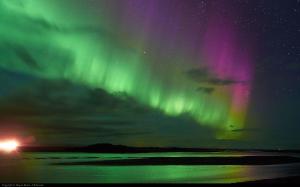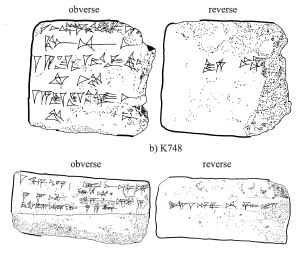Blog
Light of History
21 October 2019
 Moyan Brenn, via Wikipedia, cc-by-2.0
Moyan Brenn, via Wikipedia, cc-by-2.0Humans have always been astronomers. We have looked to the night sky in wonder, and have recorded what we saw for thousands of years. But often these records are lost to time, and even when we do have records the descriptions recorded aren’t always clear.
Many of the early astronomical recordings we have mark significant events. Things such as eclipses or new stars (supernovae) appearing in the sky. But a new paper in The Astrophysical Journal Letters1 shows the record of something much more subtle: the rippled colors of the northern lights.
 Y. Mitsuma and H. Hayakawa
Y. Mitsuma and H. HayakawaThe authors describe three Assyrian and Babylonian cuneiform tablets. These tablets date from 680 to 655 BCE and describe red clouds or a red glow in the night sky. This is a common appearance of aurora, and the description is similar to Babylonian recordings dating from a century later. It seems to be the earliest recording of the northern lights.
While the Assyrian Empire was much further south than northern lights are typically seen today, at the time Earth’s north magnetic pole was much closer to the region. Sightings of aurora would have been more common then. Still, the description of a “red glow” is rather vague, so the authors also looked to scientific records as well.
The northern lights appear strongly when solar activity is high. As the Sun releases high energy particles that create aurora, these particles can also interact with nitrogen in the air to produce carbon-14. When the Sun is particularly active, records of that activity can be found in elevated carbon-14 levels in things such as tree rings. The authors noted that tree rings from about 660 BCE show increased carbon-14, which agrees pretty well the cuneiform tablets.
Hayakawa, Hisashi, et al. “The Earliest Candidates of Auroral Observations in Assyrian Astrological Reports: Insights on Solar Activity around 660 BCE.” The Astrophysical Journal Letters 884.1 (2019): L18. ↩︎